30 Preventing Infectious Diseases Worksheet Answers
Oct 07, 2019 · Disease prevention instructional activities for teens. Pkids idw instructional activities for teens 1 unit 2. Modes Of Disease Transmission Microbiology Showing top 8 worksheets in the category infectious disease. Preventing infectious diseases worksheet answers. Aahe standards 1125 propose ways to reduce or prevent injuries and health problems. ID: 2423732 Language: English School subject: Science Grade/level: 5 Age: 10-11 Main content: Stop diseases Other contents: avoiding disease from spread Add to my workbooks (4) Download file pdf Embed in my website or blog Add to Google Classroom
Quiz & Worksheet Goals. These assessments are designed to help you understand the following: The condition that prevents normal body function. Characteristics of infectious diseases. Interventions.

Preventing infectious diseases worksheet answers
infectious diseases can be transmitted. 2. Describe how common food-borne diseases are transmitted. 3. Explain the relationship between injection drug use and transmission of blood-borne diseases such as HIV and hepatitis. 4. Summarize ways to prevent the spread of infectious diseases. Lesson 2 Preventing Infectious Disease National Health Distribute a copy of the Prevention of Infectious Diseases Worksheet to each student. Direct students to complete the five sentences on the top half of the worksheet. Have students share their responses and refer to the notes on Teacher's Prevention of Infectious Diseases for discussion points. Basics of Epidemiology Answer Key Pre-Quiz Question (slide 4) Q, A reservoir is the habitat where an infectious disease lives, multiplies and grows. Which of these could be a reservoir? A. Chronic carrier B. Medical equipment C. Bird D. Hospital room floor E. Door knob F. Linens G. Blood pressure cuff H. All of the above Answer: H.
Preventing infectious diseases worksheet answers. Aug 20, 2018 · Preventing infectious diseases worksheet answers. Quiz worksheet goals. There are six main types of disease causing agents or pathogens. Prions viruses bacteria protozoans fungi and parasites. These pathogens vary greatly in size and shape and also in the type of diseases they cause in their host. Some of the worksheets displayed are general. Basics of Epidemiology Answer Key Pre-Quiz Question (slide 4) Q, A reservoir is the habitat where an infectious disease lives, multiplies and grows. Which of these could be a reservoir? A. Chronic carrier B. Medical equipment C. Bird D. Hospital room floor E. Door knob F. Linens G. Blood pressure cuff H. All of the above Answer: H. Disease Study Worksheet. What is the definition of an infectious disease? What is the definition of a non-infectious disease? What are the four main groups of pathogens? What is the difference between a vaccine and a booster? What is an epidemic? What does STD stand for? List 3 infectious diseases caused by viruses. Answers will be scored on the following: Assessment Criteria. Students show how well they understand the when, how, and why of hand washing as well as what to do when appropriate hand washing facilities are not available. Wisconsin Health Education Standards . A Disease prevention and health promotion B Health behavior C
units: Introduction to Infectious Diseases, Disease Prevention, Sports and Infectious Disease, Stigma and Infectious Disease, Civil Rights and Infectious Disease, and Bioterrorism and Infec-tious Disease. For each unit, instructors will find fun and helpful activities for participants in five age groups: GCSE Biology (9-1) - Health and Disease - Worksheet & Answers. Here are a list of our available resources. If they are any help, please share with anyone that might also benefit :) This worksheet covers the terms health health and disease, the difference between communicable and non-communicable disease, and how diseases can interact. GENERAL WORKSHEET Infectious & Non-Infectious Diseases NAME ORGANISATION DATE IMPORTANT Real people have generously donated their body so that medical scientists can learn about health and disease. Our donors deserve the utmost respect and admiration for their invaluable contribution to medical science. INSTRUCTIONS NOTES Info sheet Poster 1. • What are the different ways that diseases can spread? • How can the way a disease spreads affect who is at risk? LESSON OBJECTIVES • Identify the different ways diseases can spread. • Discuss how the way a disease spreads affects who is at risk. OVERVIEW Students research different infectious diseases to determine the ways they spread and
Chapter 13: Preventing Infectious Diseases. STUDY. Flashcards. Learn. Write. Spell. Test. PLAY. Match. Gravity. Created by. bnm13. Terms in this set (15) infectious diseases. any disease that is caused by an agent that has invaded the body. pathogen. any agent that causes disease. bacteria. tiny, single-celled organisms, some of which can cause. About This Quiz & Worksheet. The quiz and worksheet will evaluate your understanding of common infectious diseases as discussed in the related lesson. You will be tested on ways to prevent. To stop the spread of an infectious disease, it is important to know. They explore how diseases spread and how they can reduce that spread. Taking vitamins such as echinacea or vitamin c has not been shown to prevent the common cold. Preventing Infectious Diseases Worksheet Answers / Infectious Diseases Ck 12 Foundation /. Infection prevention. INFECTIOUS DISEASE Read the Passage Carefully and answers the Following Questions: - 1Within the next 25 years, AIDS is set to join heart diseases and stroke as the top three causes of death worldwide. Currently ranked fourth behind heart diseases, stroke and respiratory infections, AIDS is set to become No. 3.
The Immune System and Disease Section 40-1 Infectious Disease(pages 1029-1033) This section describes the causes of disease and explains how infectious diseases are transmitted. Introduction (page 1029) 1. Any change, other than an injury, that disrupts the normal functions of the body, is a(an). 2. What are three ways diseases can come about?
Preventing infectious diseases worksheet answers. Now is the time to make today the first day of the rest of your life. Apple tomato mandarin peach rotten piece of fruit same type as above 2 x clip seal bag. Shed the societal and cultural narratives holding you back and let free step by step lifetime health textbook solutions reorient your old.
- How do we prevent infectious diseases to spread? 35.1 - Infectious Disease • PATHOGEN: a disease-causing agent; disrupt normal body functions-pathogens include: viruses fungi bacteria protozoans. Examples of viruses: Small pox Herpes Polio Common Cold. How are Diseases Spread? 1. Coughing, sneezing, physical contact
Teacher's Preventing Infectious Diseases Worksheet... Students synthesize the answers they have already provided above into a paragraph. Also... Learn more answer key 1 Part 1. Basic Framework of Infectious... For each disease, identify 1) the mode of transmission; 2) the agent type (bacterium...
In order to answer this and similar questions, it is important to determine the factors that have an impact on whether or not a disease. DC-H1: Some Infectious Diseases Activity Worksheet. Pass It On! Disease Competition Student 5 Case 1: Tuberculosis ... combat the symptoms of the active disease, as well as prevent inactive or latent TB from
Skills Worksheet Reteaching Class Date 3 Section: Common Infectious Diseases Imagine you are a doctor. The following people have come to you for treatment of common infectious diseases. Answer the questions at the end of each description to attempt to identify the disease and explain how each person might be treated. Case 1
By: Arwien K. \ CHAPTER 13 PREVENTING INFECTIOUS DISEASES SECTION 1 WHAT ARE INFECTIOUS DISEASES? Four ways infectious diseases spread. Five different agents that can cause infectious diseases.
Distribute a copy of the Prevention of Infectious Diseases Worksheet to each student. Direct students to complete the five sentences on the top half of the worksheet. Have students share their responses and refer to the notes on Teacher's Prevention of Infectious Diseases for discussion points.
What are Diseases? Answers 1. a 2. c 3. b 4. b Explanation of Answers 1. Some diseases can be passed on from one person to another. These are called infectious diseases. 2. One way to stop the spread of infectious diseases is to fight the germs that cause them. Another way is to stop contact between people during the time that the disease can.
Lesson 4.16: Life Science - Health: Disease Prevention H. Turngren, Minnesota Literacy Council, 2014 p.11 GED Science Curriculum SCIENCE TEACHER ANSWER KEY 1. What is public health? Public health is the defined in the reading as "the practice of preventing disease and promoting health". 2.
Preventing Infectious Diseases Worksheet. Name: Class Period: Complete the following sentences and elaborate by adding at least one additional sentence: 1. Infectious germs can spread from person to person by . Students demonstrate their understanding about how germs may be transmitted such as by insects,
Health Chapter 13: Preventing Infectious Diseases study guide by riley_bane00 includes 17 questions covering vocabulary, terms and more. Quizlet flashcards, activities and games help you improve your grades.
Worksheets and No Prep Teaching Resources Illness Health: Diseases Activities, Worksheets, Printables, and Lesson Plans: Illness : Illness: Health : Health: Reading Comprehensions Alzheimer's Disease (Grades 3-4) Infectious Diseases (Grades 4-6) Cardiovascular Diseases (Grades 4-6) Lyme Disease (Grades 4-6) Osgood-Schlatter Disease (Grades 4-6).
infectious diseases can be transmitted. 2. Describe how common food-borne diseases are transmitted. 3. Explain the relationship between injection drug use and transmission of blood-borne diseases such as HIV and hepatitis. 4. Summarize ways to prevent the spread of infectious diseases. Lesson 2 Preventing Infectious Disease National Health
2. Identify the three ways in which infectious diseases can be passed from one person to another. 3. The body has several ways to prevent a pathogen from entering it. List and explain two. 4. Briefly describe the main components of the immune system. 5. Describe an infectious disease caused by a bacteria. 6.
answer key 3 INFECTIOUS DISEASES 103 idEntifyinG modEs of transmission Scene A: Vector-borne Transmission Students may recognize the following about the presented scene: • Malaria, a protozoan infection transmitted by mosquitoes, is an example of a vector-borne disease that may occur in this situation.
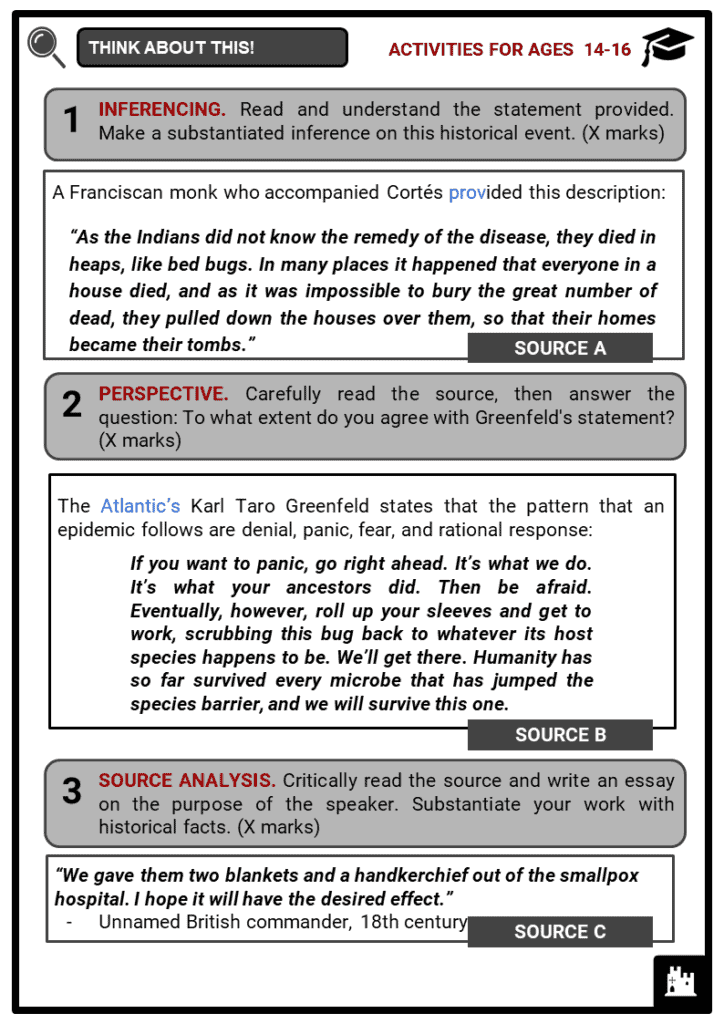
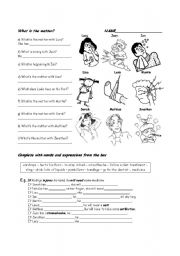









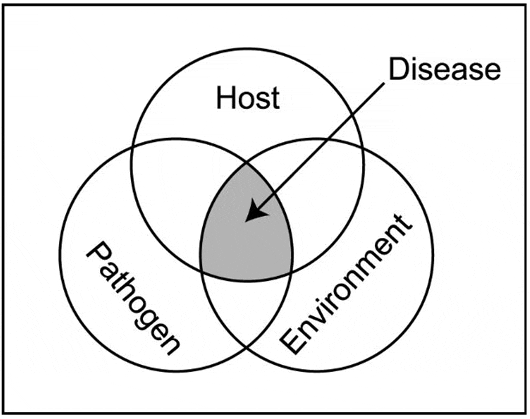
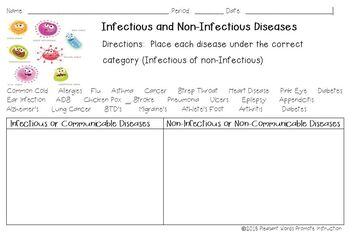
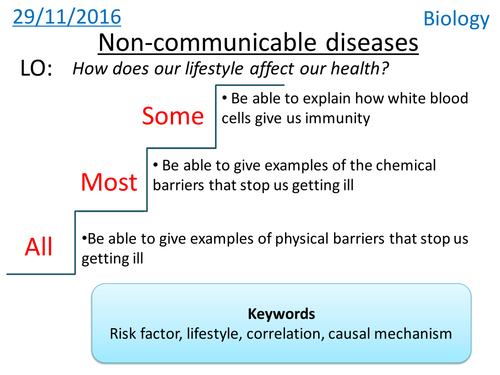


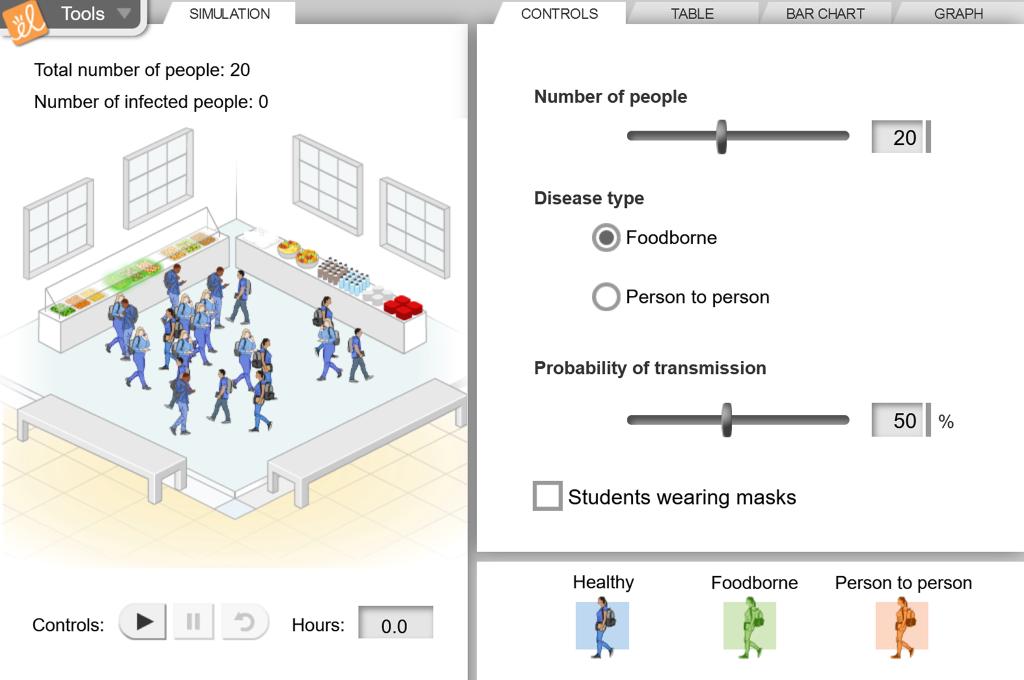
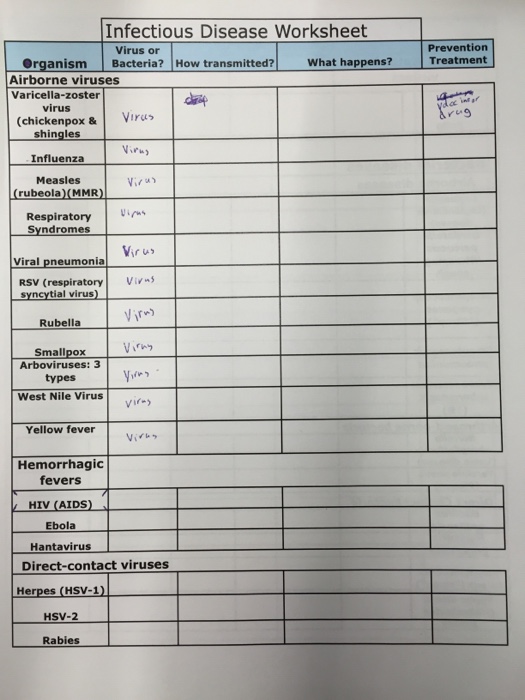

0 Response to "30 Preventing Infectious Diseases Worksheet Answers"
Post a Comment